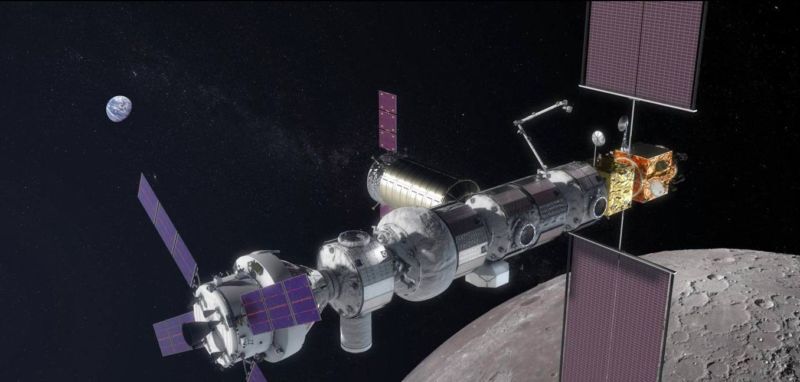3.08.2024
"These defects could lead the flight computers to unexpectedly restart."

Do you remember the Lunar Gateway? You could be forgiven if not, as the program continues to be tossed around by NASA planners, and it is still not entirely clear what purpose the lunar space station is supposed to serve.
The Gateway—a small space station that will fly in a halo orbit around the Moon and spend most of its time far from the lunar surface—was initially supposed to launch in 2022. That obviously did not happen, and now, according to a new report from the US Government Accountability Office, the space agency does not expect the launch of the initial elements of the Gateway until at least December 2027. The baseline cost estimate is $5.3 billion.
NASA's present plans contemplate using the Gateway as part of the Artemis IV mission, presently scheduled for September 2028. Unfortunately, the Gateway's current launch target is already three months later than needed to support Artemis IV, the second mission to land humans on the Moon. But that's OK. There are a lot of other moving parts for this mission, so a launch any time this decade would be a win.
The report includes a helpful cartoon to explain the complicated sequence that needs to happen for Gateway to be involved in the Artemis IV mission:
- Launch of the initial segments of the Gateway, a power and propulsion module, and a habitation module, to a halo orbit around the Moon
- Launch of a SpaceX Dragon XL vehicle to bring supplies to the Gateway
- Launch of multiple SpaceX Starships to fuel a Lunar Starship, which will then fly to and dock with the Gateway
- Launch of a NASA Space Launch System rocket carrying four astronauts inside an Orion spacecraft as well as another Gateway module
- After launch, Orion separates from the rocket and docks with this module, the International Habitat
- Orion tugs the International Habitat to the Gateway and docks; the crew exits onto Gateway
- Two crew members board the Lunar Starship and go down to the Moon for six days
- Starship flies back to the Gateway, and the four astronauts return to Earth inside Orion.

How the Artemis IV mission will (probably) take place.
In a rather understated manner, the report notes that this plan is fairly complex and faces some serious schedule risks.
"This mission will be complex because NASA will need to coordinate across seven NASA programs, multiple contractors that support those programs, and international partners to execute the mission," the report states. "It will also be the first launch of an upgraded version of the Space Launch System rocket."
Developmental difficulties
The report also finds that the Gateway program is running into some pretty serious technical difficulties. One involves a defective network chip that facilitates communication throughout the lunar space station. Its failure could cause myriad problems onboard the Gateway.
"For example, these defects could lead the flight computers to unexpectedly restart," the report states. "If the network is not functioning properly, it could result in loss of control of the Gateway. Program officials are also concerned that they might identify more defects with the communication network, based on the number found already."
Another risk involves something called "stack controllability." This essentially means that because SpaceX's Lunar Starship is so much more massive than the Gateway, when it is docked to the space station, the Gateway's power and propulsion element (PPE) will not be able to maintain a proper orientation of the entire stack.
"Program officials estimate that the mass of the lunar lander Starship is approximately 18 times greater than the value NASA used to develop the PPE’s controllability parameters," the report states. "According to NASA’s system engineering guidance, late requirements and design changes can lead to cost growth and schedule delays."
The report also has some sobering conclusions about the potential utility of the Lunar Gateway for Mars missions. (In the past, NASA officials have spoken about the Gateway as a staging area for spacecraft and propellant for human missions to the surface of Mars.) However, the "stack controllability" issue poses a serious constraint to hosting large Mars transit vehicles. Moreover, the planned 15-year lifetime of the Gateway may not be long enough to sustain Mars missions.
"The Gateway could have exceeded its planned 15-year on-orbit life as early as 2042 when crewed missions to Mars are potentially just beginning," the report states.
All in all, the report seems to suggest that the Gateway is way behind schedule and is of limited use to lunar and Mars landings. The report suggests the Gateway will be complex to undertake at the very same time NASA is attempting to establish a lunar surface program. But other than that, everything is going great.
Quelle: arsTechnica
